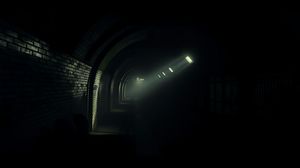
Florence Nightingale's Blue Plaque in Westminster commemorates the legendary founder of modern nursing, who revolutionized healthcare practices in the 19th century. The plaque is a tribute to her pioneering work and is often sought out by visitors interested in medical history and reform.
Florence Nightingale's influence extended beyond nursing; she was also a statistician and used her analytical skills to reform hospital sanitation methods, significantly reducing death rates. This innovative approach makes her a fascinating figure not only in health care but in the advancement of data-driven decision-making.
The plaque is found in Mayfair, an area with a rich history itself, and marks the site where Nightingale once lived. Her residence here highlights her connection to the City of Westminster, an epicenter of socio-political development in London throughout her life.
An intriguing fact about Florence Nightingale is that she was known as "The Lady with the Lamp" due to her habit of making rounds at night during the Crimean War, providing care and comfort to soldiers. This imagery has become iconic, symbolizing compassion and dedicated patient care.
One might be surprised to learn that Nightingale was initially hesitant to pursue a career in nursing due to societal expectations of women at the time. Her eventual commitment to this vocation was a bold step that paved the way for future generations of women in medicine.
The blue plaque not only commemorates her work in healthcare reform but also serves as a beacon to her contributions to public health policy. Florence Nightingale's legacy is deeply embedded in London's history, making a visit to her plaque a meaningful experience for those who appreciate both history and contributions to society.

Making the Most of Your Visit:
Take a moment to admire the architecture in Mayfair around the plaque. It's a beautiful area, and you can imagine how Florence Nightingale would have passed through these streets herself.
If you're interested in learning more about Nightingale, the Florence Nightingale Museum is a short distance away, located at St Thomas' Hospital. Consider pairing your visit to the plaque with a stop there for a deeper dive into her life and contributions.
While visiting, reflect on the plaque's location in Westminster, an area known for its influence on British political and social reform. It's quite fitting, given Nightingale's impact on healthcare practices and policies.
Keep an eye out for other blue plaques in the area. Mayfair is rich with history, and many other notable historical figures have been commemorated in this manner nearby.
Enjoy the journey through Mayfair itself, as it's one of London's most historic and luxurious neighborhoods. Even outside of historical sightseeing, the shops, cafes, and atmosphere are worth experiencing.

Visiting Times & Costs:
The Florence Nightingale Blue Plaque is located in a public area and is freely accessible to the public year-round.
There is no entrance fee or cost associated with visiting the plaque itself, as it is on an exterior wall of a building viewable from the street.
As the plaque is located outdoors, there are no specific opening hours, but it is best visited during daylight for easy viewing.
Accessibility is generally dependent on the street conditions in the Mayfair area. While most of London is wheelchair accessible, visitors should be aware of possible uneven pavements or busy pedestrian traffic.

Address & Map:

Nearby:























